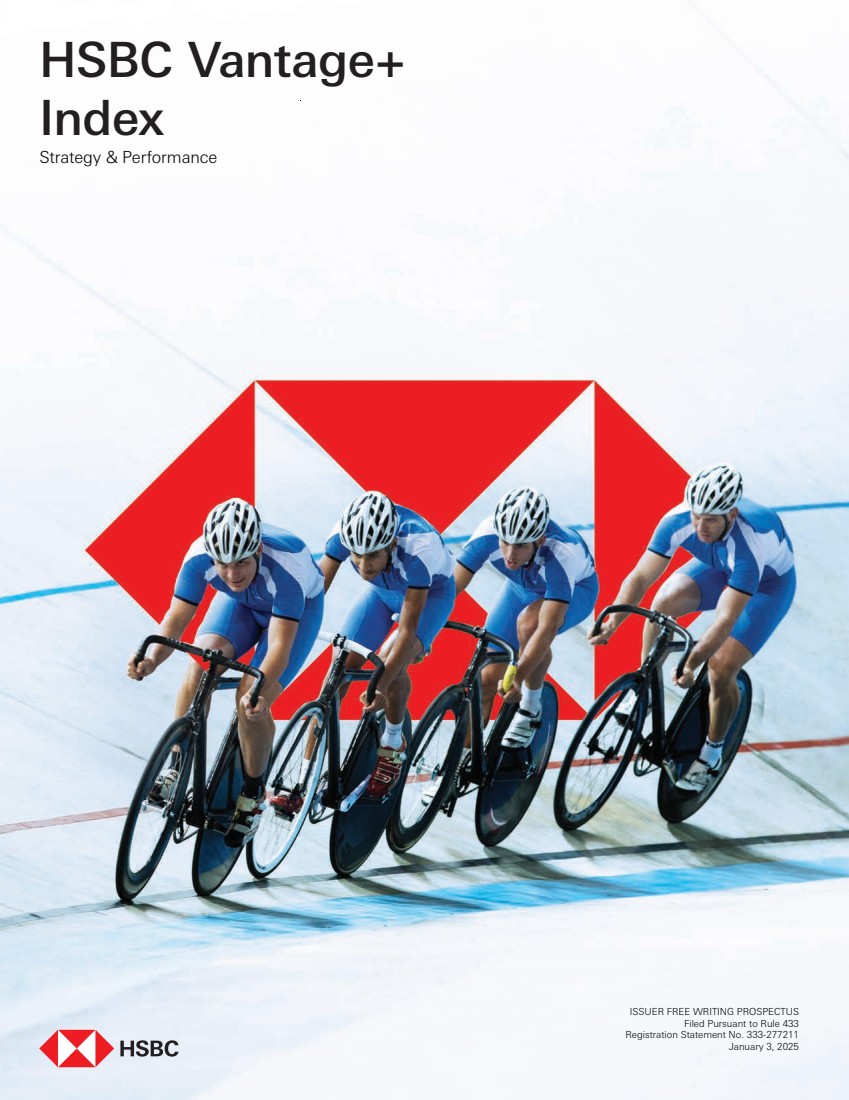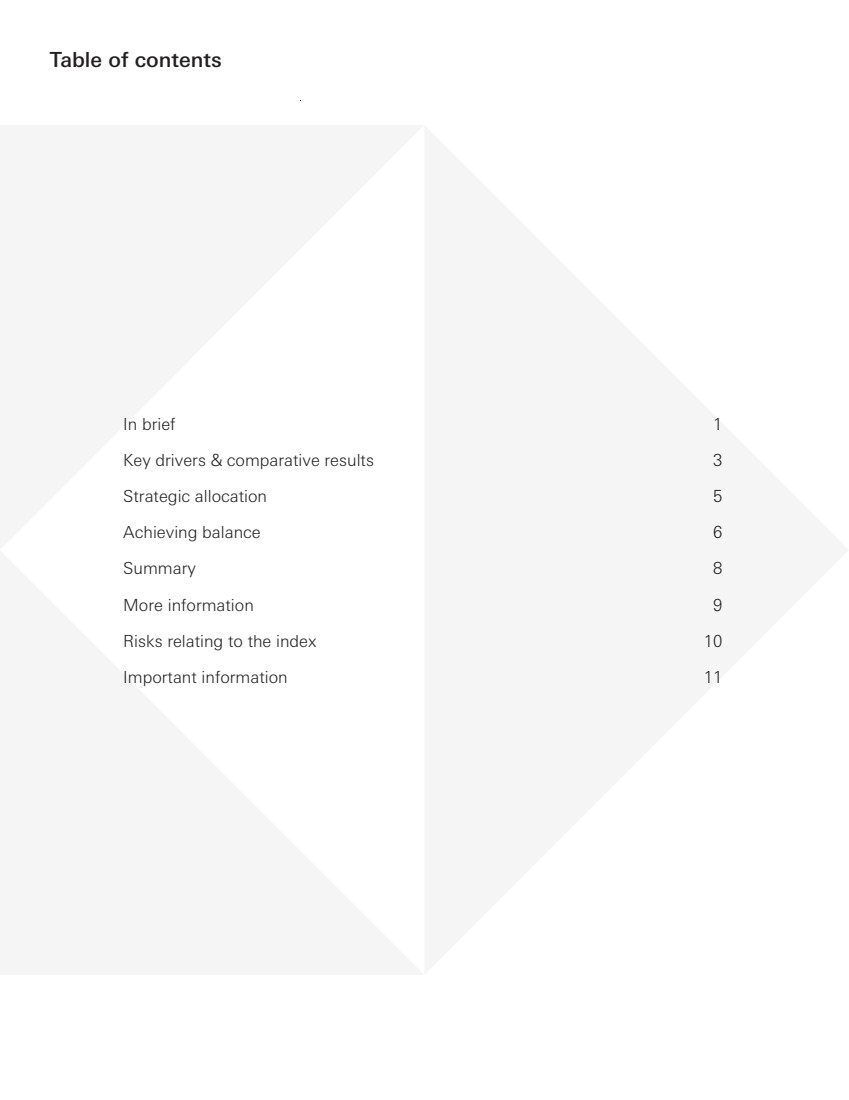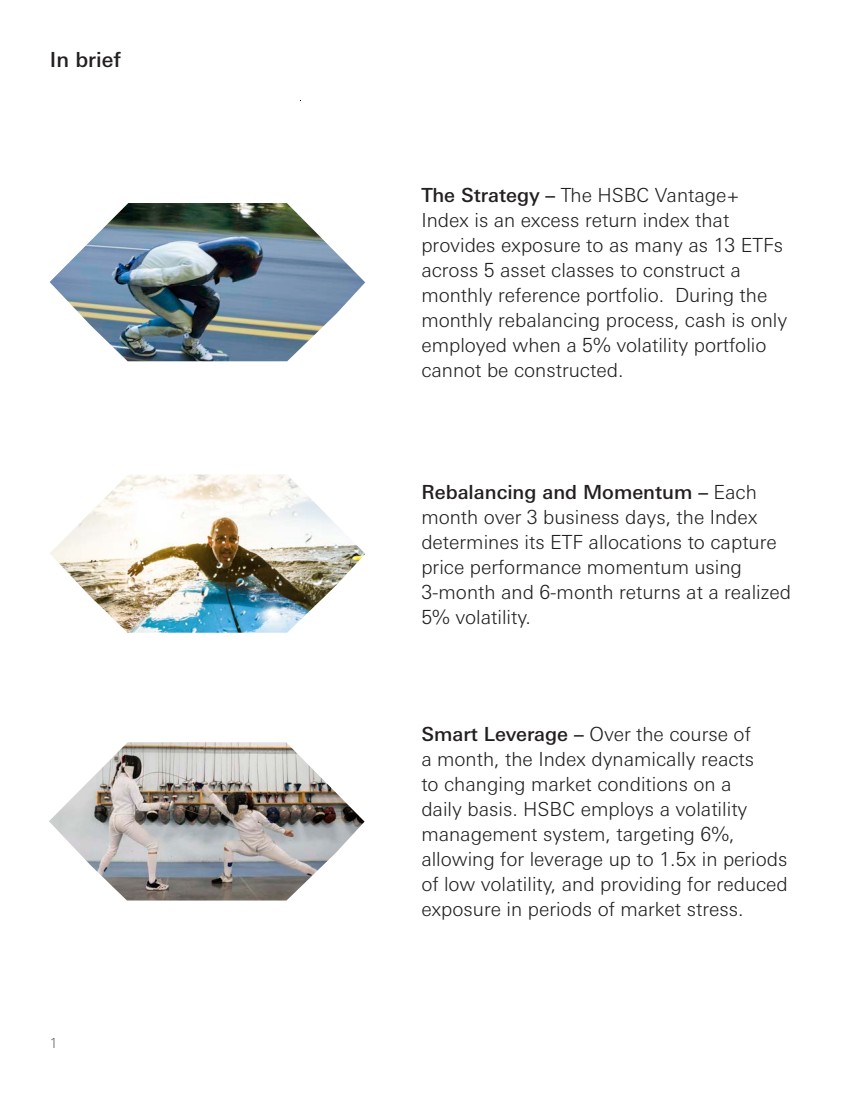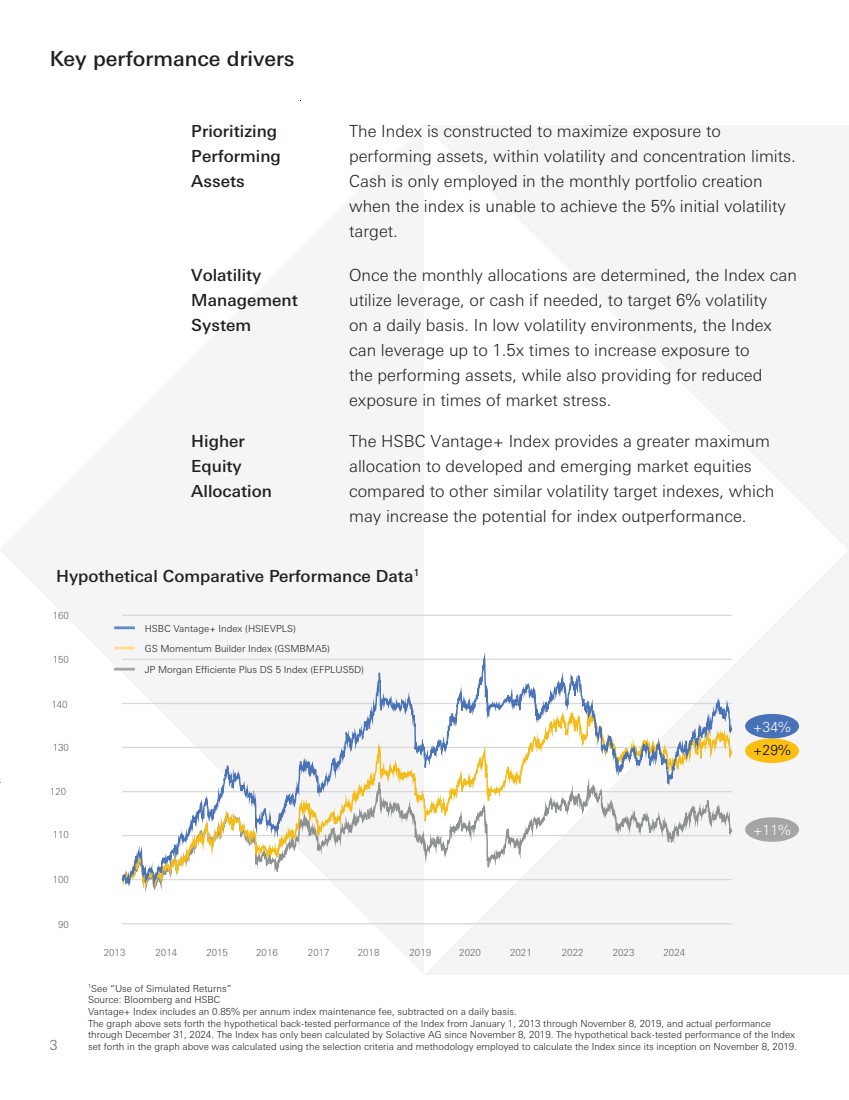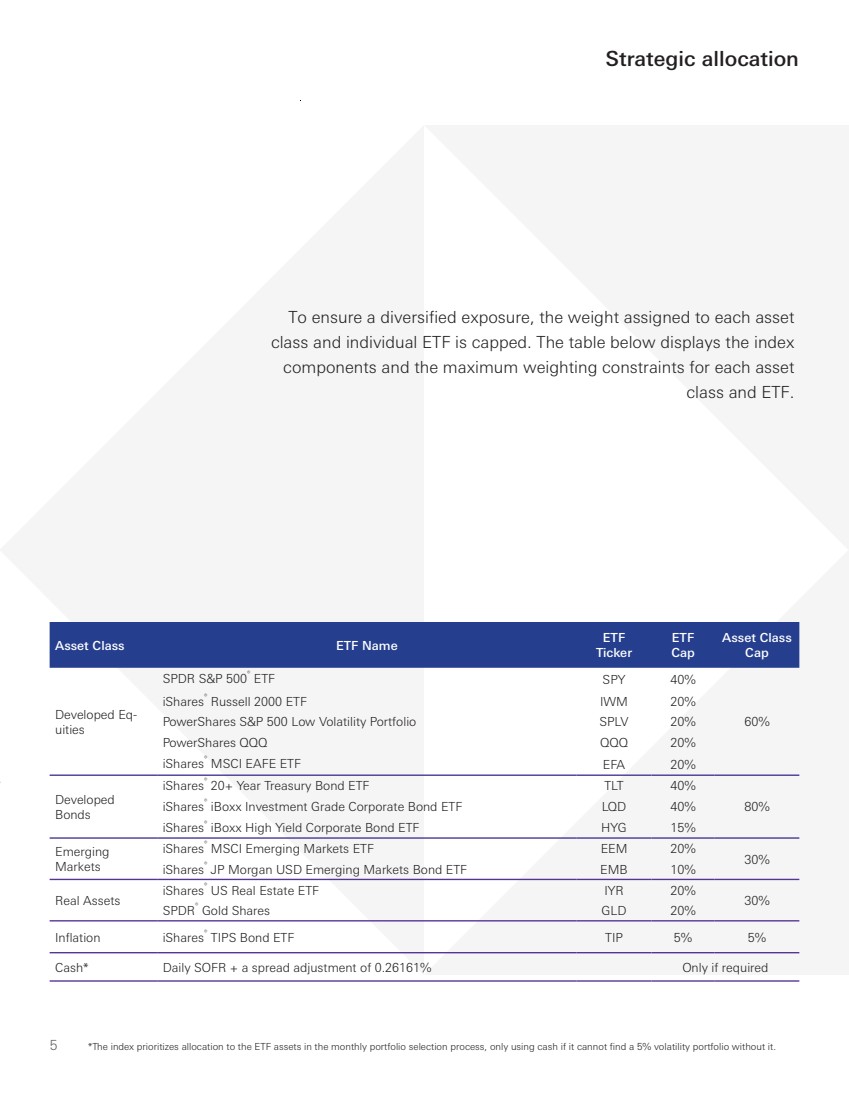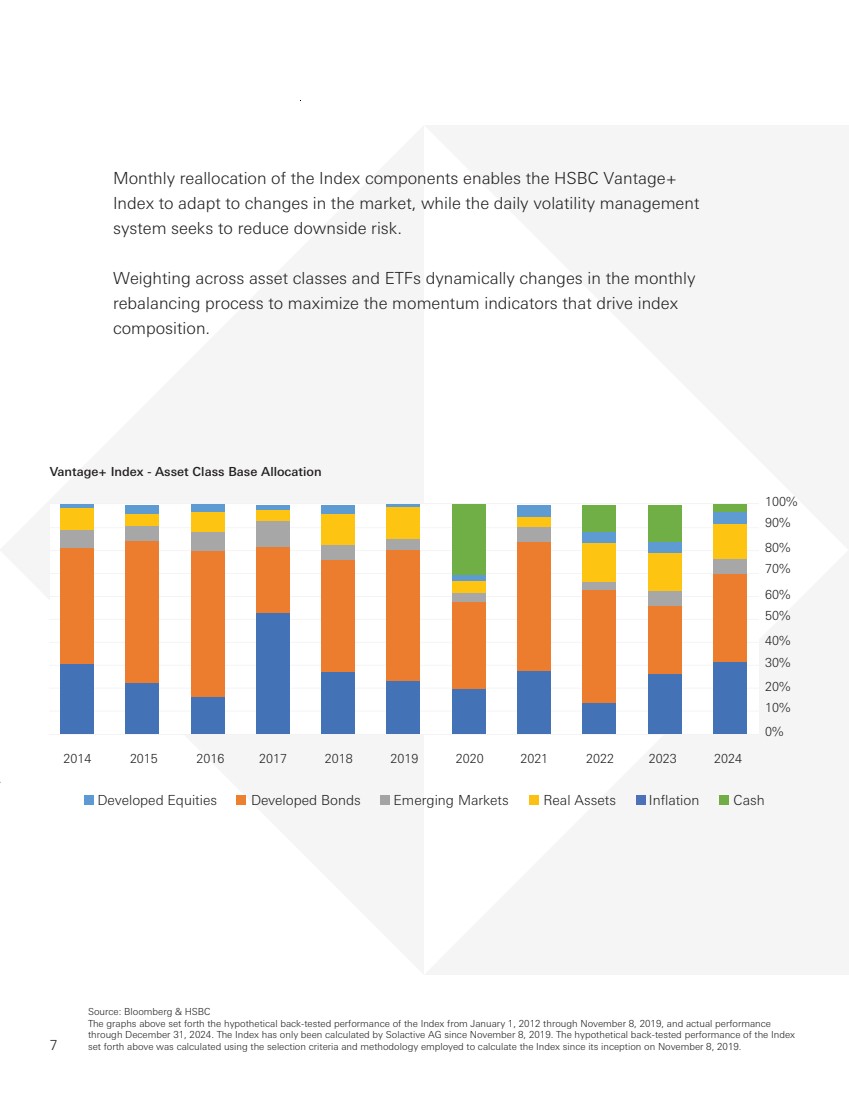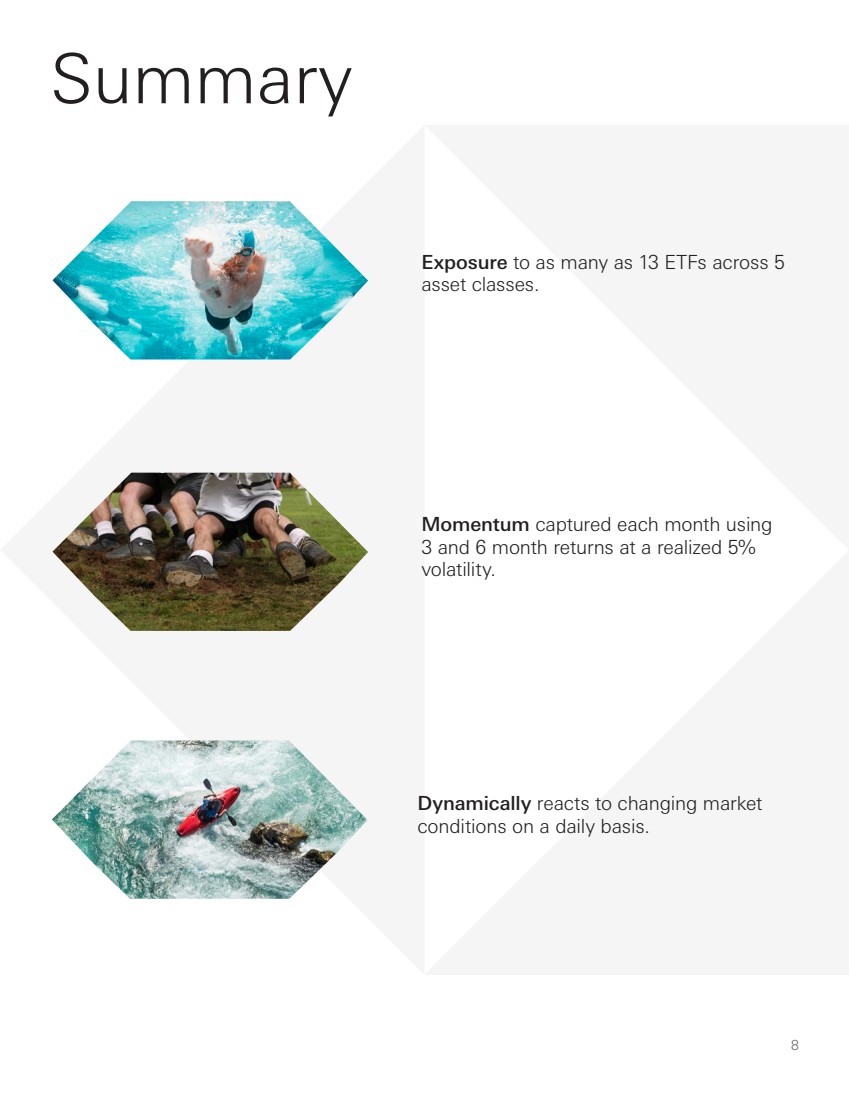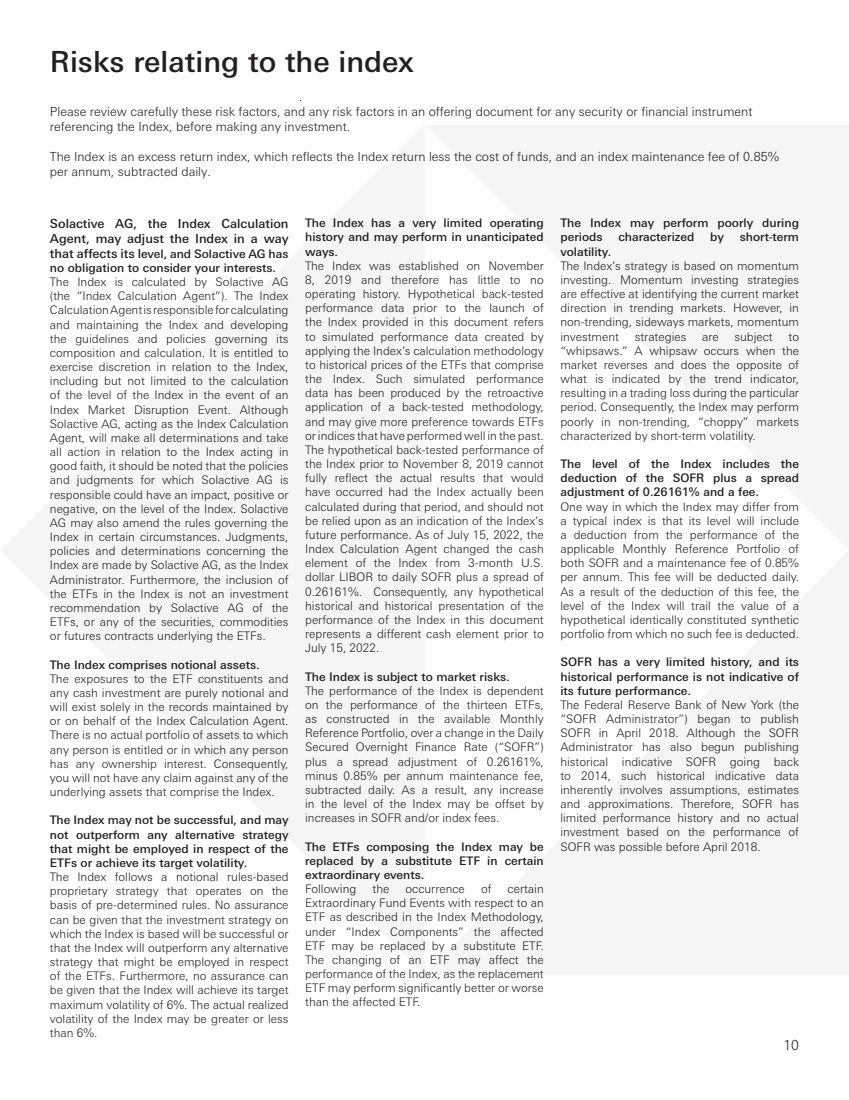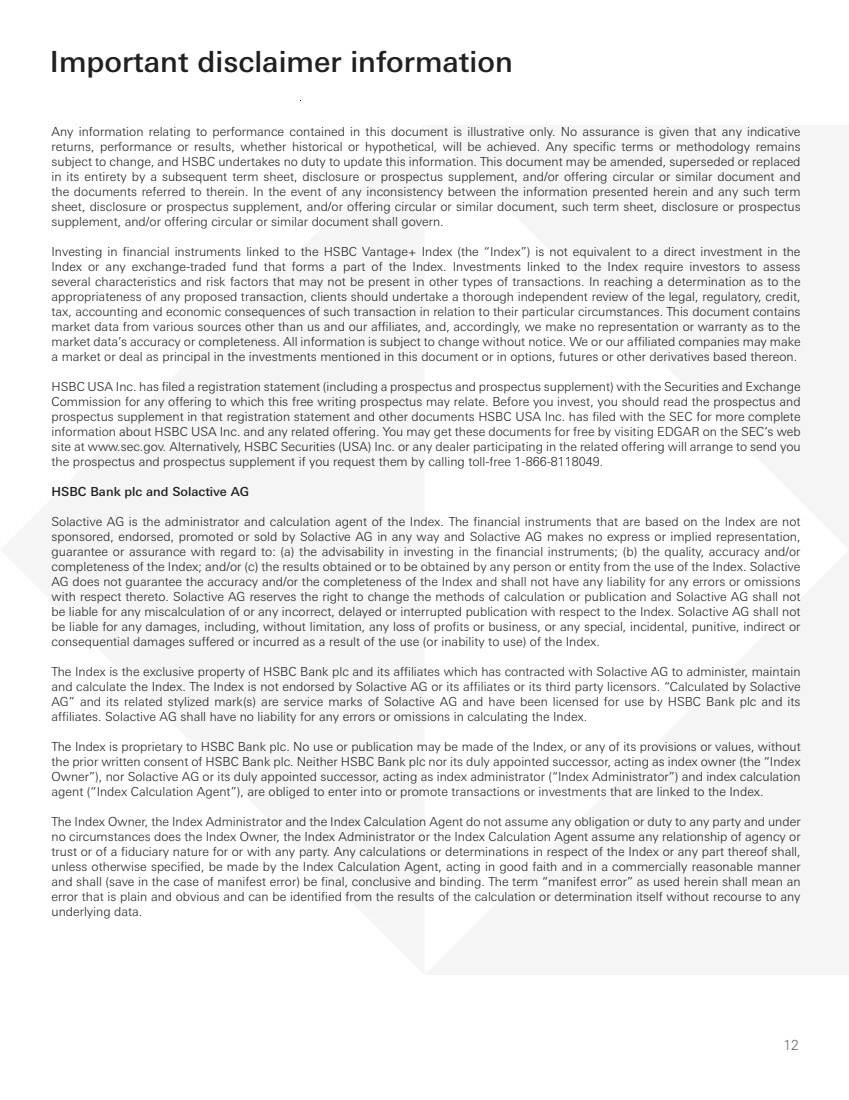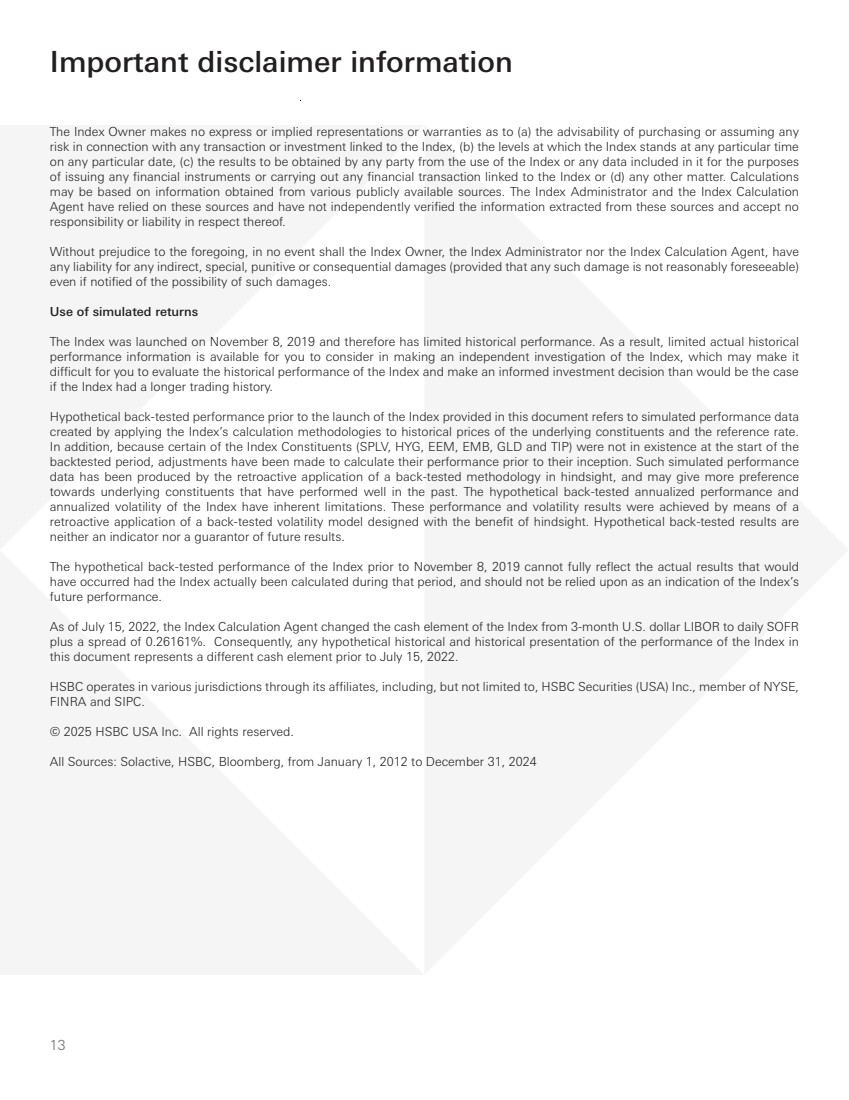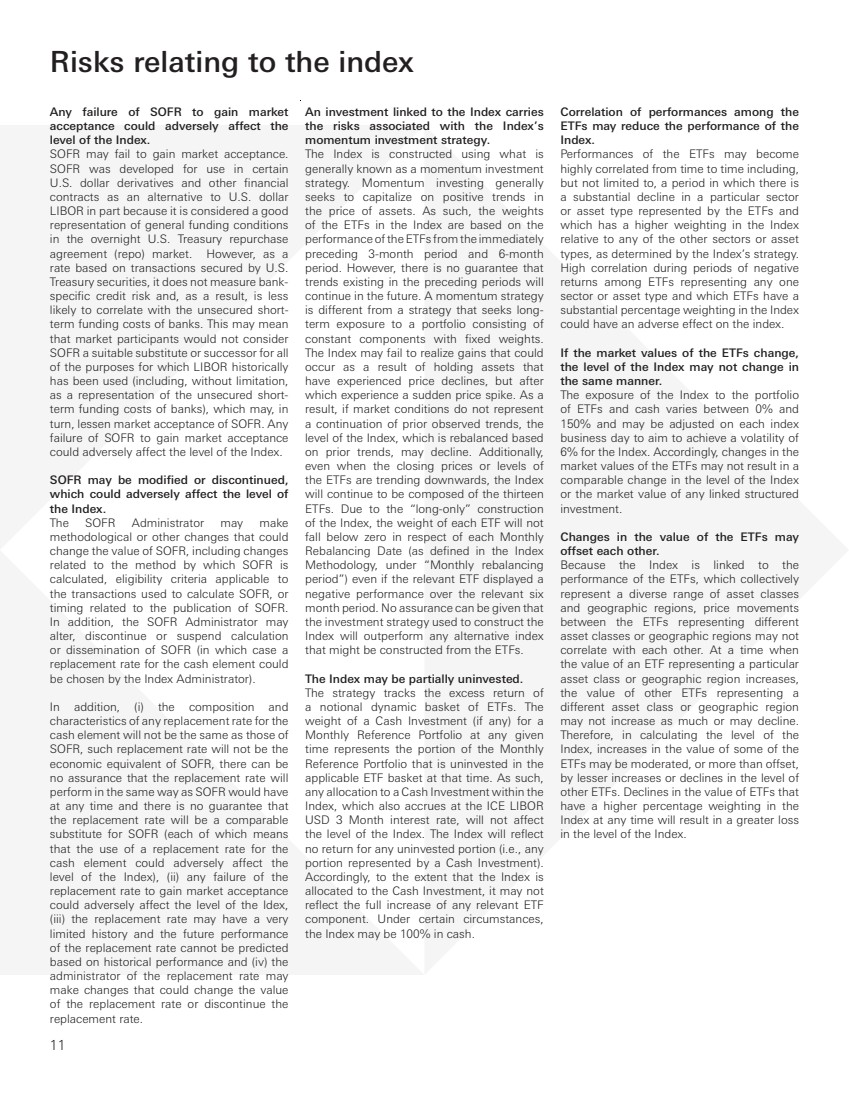
| 11 Risks relating to the index Any failure of SOFR to gain market acceptance could adversely affect the level of the Index. SOFR may fail to gain market acceptance. SOFR was developed for use in certain U.S. dollar derivatives and other financial contracts as an alternative to U.S. dollar LIBOR in part because it is considered a good representation of general funding conditions in the overnight U.S. Treasury repurchase agreement (repo) market. However, as a rate based on transactions secured by U.S. Treasury securities, it does not measure bank-specific credit risk and, as a result, is less likely to correlate with the unsecured short-term funding costs of banks. This may mean that market participants would not consider SOFR a suitable substitute or successor for all of the purposes for which LIBOR historically has been used (including, without limitation, as a representation of the unsecured short-term funding costs of banks), which may, in turn, lessen market acceptance of SOFR. Any failure of SOFR to gain market acceptance could adversely affect the level of the Index. SOFR may be modified or discontinued, which could adversely affect the level of the Index. The SOFR Administrator may make methodological or other changes that could change the value of SOFR, including changes related to the method by which SOFR is calculated, eligibility criteria applicable to the transactions used to calculate SOFR, or timing related to the publication of SOFR. In addition, the SOFR Administrator may alter, discontinue or suspend calculation or dissemination of SOFR (in which case a replacement rate for the cash element could be chosen by the Index Administrator). In addition, (i) the composition and characteristics of any replacement rate for the cash element will not be the same as those of SOFR, such replacement rate will not be the economic equivalent of SOFR, there can be no assurance that the replacement rate will perform in the same way as SOFR would have at any time and there is no guarantee that the replacement rate will be a comparable substitute for SOFR (each of which means that the use of a replacement rate for the cash element could adversely affect the level of the Index), (ii) any failure of the replacement rate to gain market acceptance could adversely affect the level of the Idex, (iii) the replacement rate may have a very limited history and the future performance of the replacement rate cannot be predicted based on historical performance and (iv) the administrator of the replacement rate may make changes that could change the value of the replacement rate or discontinue the replacement rate. An investment linked to the Index carries the risks associated with the Index’s momentum investment strategy. The Index is constructed using what is generally known as a momentum investment strategy. Momentum investing generally seeks to capitalize on positive trends in the price of assets. As such, the weights of the ETFs in the Index are based on the performance of the ETFs from the immediately preceding 3-month period and 6-month period. However, there is no guarantee that trends existing in the preceding periods will continue in the future. A momentum strategy is different from a strategy that seeks long-term exposure to a portfolio consisting of constant components with fixed weights. The Index may fail to realize gains that could occur as a result of holding assets that have experienced price declines, but after which experience a sudden price spike. As a result, if market conditions do not represent a continuation of prior observed trends, the level of the Index, which is rebalanced based on prior trends, may decline. Additionally, even when the closing prices or levels of the ETFs are trending downwards, the Index will continue to be composed of the thirteen ETFs. Due to the “long-only” construction of the Index, the weight of each ETF will not fall below zero in respect of each Monthly Rebalancing Date (as defined in the Index Methodology, under “Monthly rebalancing period”) even if the relevant ETF displayed a negative performance over the relevant six month period. No assurance can be given that the investment strategy used to construct the Index will outperform any alternative index that might be constructed from the ETFs. The Index may be partially uninvested. The strategy tracks the excess return of a notional dynamic basket of ETFs. The weight of a Cash Investment (if any) for a Monthly Reference Portfolio at any given time represents the portion of the Monthly Reference Portfolio that is uninvested in the applicable ETF basket at that time. As such, any allocation to a Cash Investment within the Index, which also accrues at the ICE LIBOR USD 3 Month interest rate, will not affect the level of the Index. The Index will reflect no return for any uninvested portion (i.e., any portion represented by a Cash Investment). Accordingly, to the extent that the Index is allocated to the Cash Investment, it may not reflect the full increase of any relevant ETF component. Under certain circumstances, the Index may be 100% in cash. Correlation of performances among the ETFs may reduce the performance of the Index. Performances of the ETFs may become highly correlated from time to time including, but not limited to, a period in which there is a substantial decline in a particular sector or asset type represented by the ETFs and which has a higher weighting in the Index relative to any of the other sectors or asset types, as determined by the Index’s strategy. High correlation during periods of negative returns among ETFs representing any one sector or asset type and which ETFs have a substantial percentage weighting in the Index could have an adverse effect on the index. If the market values of the ETFs change, the level of the Index may not change in the same manner. The exposure of the Index to the portfolio of ETFs and cash varies between 0% and 150% and may be adjusted on each index business day to aim to achieve a volatility of 6% for the Index. Accordingly, changes in the market values of the ETFs may not result in a comparable change in the level of the Index or the market value of any linked structured investment. Changes in the value of the ETFs may offset each other. Because the Index is linked to the performance of the ETFs, which collectively represent a diverse range of asset classes and geographic regions, price movements between the ETFs representing different asset classes or geographic regions may not correlate with each other. At a time when the value of an ETF representing a particular asset class or geographic region increases, the value of other ETFs representing a different asset class or geographic region may not increase as much or may decline. Therefore, in calculating the level of the Index, increases in the value of some of the ETFs may be moderated, or more than offset, by lesser increases or declines in the level of other ETFs. Declines in the value of ETFs that have a higher percentage weighting in the Index at any time will result in a greater loss in the level of the Index. |
